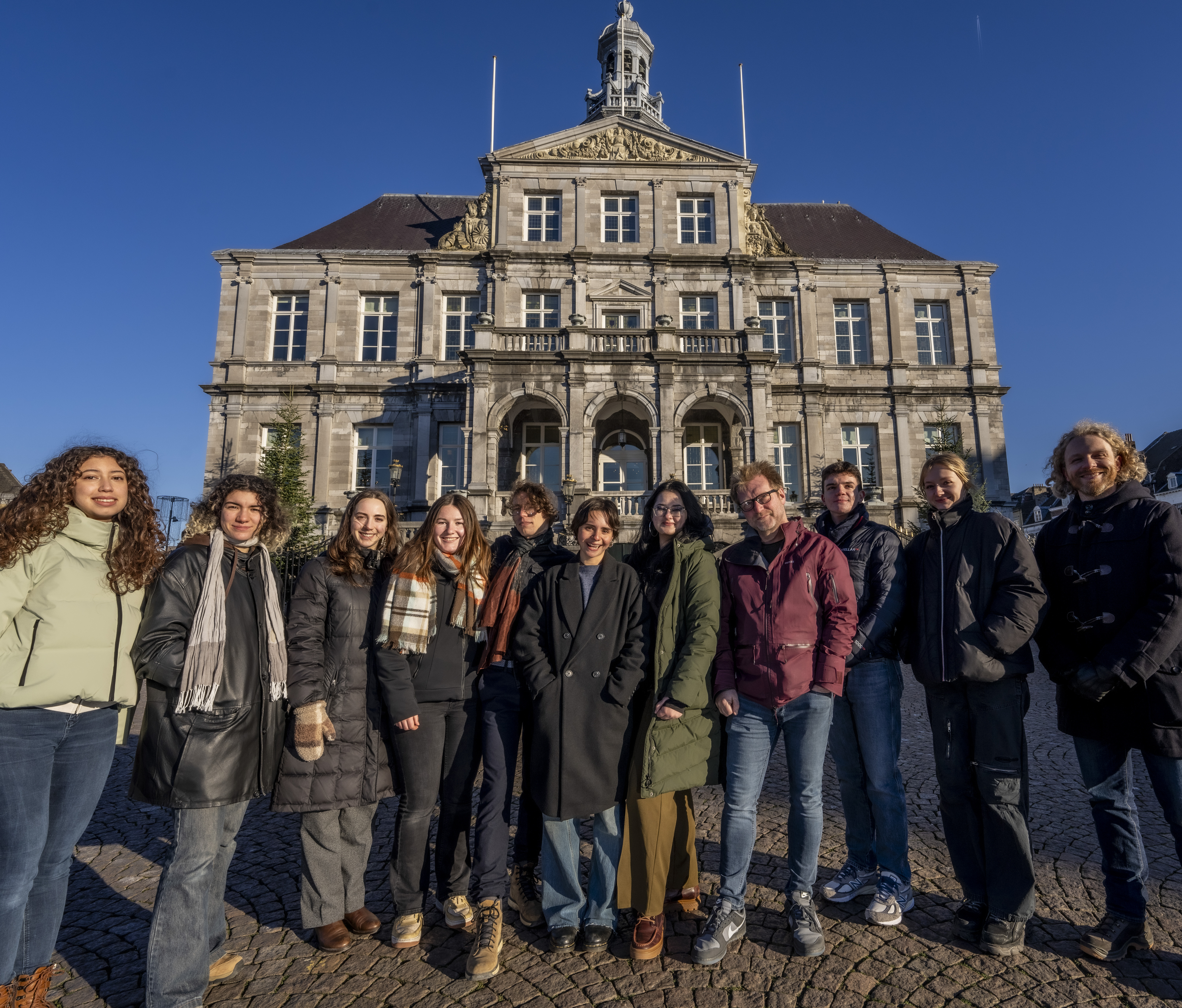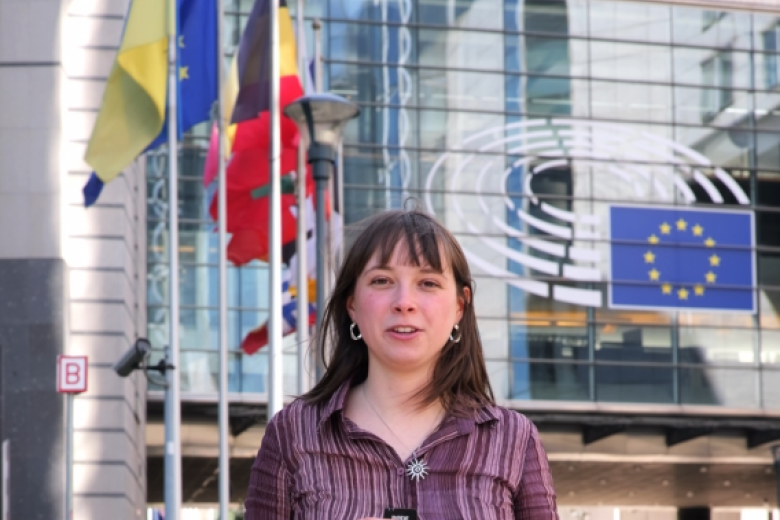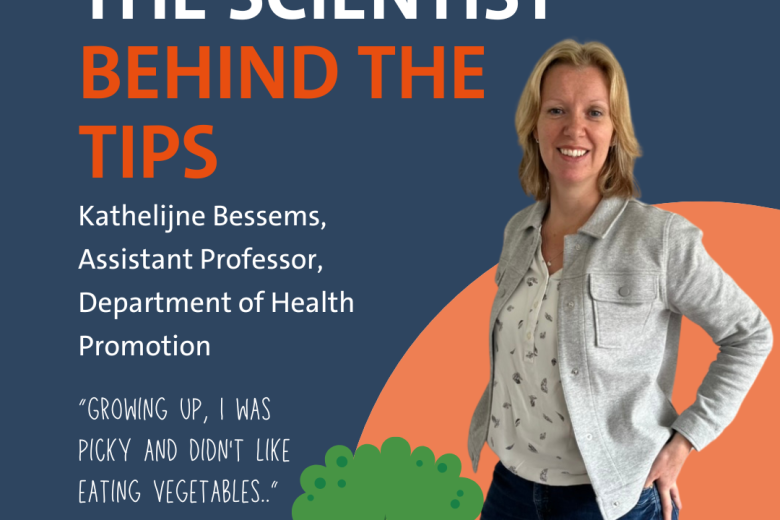The Oscars of Synthetic Biology
Picture an audience of some 4,000 people, all staring at a big screen presenting the nominees. The suspense builds. “And the award goes to ... ” The annual iGEM competition in Paris could just as well be called the Oscars of Synthetic Biology. Last November, the UM student team SublimeStone came home with gold and made it into the top 10 best undergraduate projects—an impressive achievement. For the fifth consecutive year, the University Fund Limburg contributed to the iGEM project, in line with its mission to help UM students develop their groundbreaking ideas for the benefit of academia and society.
For 20 years, teams from around the globe—around 400 in 2023—have been submitting their unique project ideas to the annual iGEM contest, a prestigious international competition for students of synthetic biology. UM has participated for the last five years; since 2019 under the supervision of Erik Steen Redeker, assistant professor of Synthetic Biology. Mara Taracena Wulff, a bachelor’s student in the Maastricht Science Programme (MSP), explains the 2023 UM project in lay terms—quite a challenge for a future scientist whose complex lab work can be difficult to translate into practice.
Eco-friendly conservation
“Actually, that’s a major misconception about synthetic biology,” she says. “It’s very widely applicable. As future scientists, we’re constantly looking for problems to solve, and we often find them in everyday things. The SublimeStone project focuses on repairing cracks in porous limestone using bacteria engineered to produce calcium carbonate in combination with a technique known as DNA origami. The goal is to develop an eco-friendly and sustainable way to preserve structures instead of using epoxy resin, which is expensive, bad for the environment and may alter the appearance of the stone. Our focus is on the beautiful limestone buildings in Maastricht, such as the iconic Basilica of Our Lady, which are susceptible to weathering. Applying synthetic biology in practice makes it accessible and relevant to people. This is also one of the aspects that iGEM values highly—the social impact of research.”
“This year, we again came home with an award for a unique idea,” says Steen Redeker. “The students worked hard for months on this project, both in the lab and beyond. Not just conducting experiments, but also creating a tight schedule, fundraising, creating awareness, giving presentations in schools and learning to work together. In recent years, we’ve had students from other programmes as well, not just the Maastricht Science Programme, which I teach. What sets this project apart is the cross-pollination of ideas between different disciplines—synthetic and systems biology, chemistry, programming. Over the course of the project, I’ve seen the students grow both individually and as a team. As their teacher, that makes me very proud.”

Fundraising through storytelling
For a project like this to be successful, additional funding is often needed to supplement the financial and material support provided by the faculty. In addition to the grant from the Student Activities Support Committee (CooSa) of University Fund Limburg, the students raised money through a crowdfunding campaign on the UM Crowd platform.
“We were given a golden tip: use storytelling,” says MSP student Floor Vervuren. “Just pitching our research project to potential donors didn’t work. We had to emphasise the human-interest side of the project, the importance of preserving cultural heritage. We created visibility on social media and posted YouTube videos with accessible explanations of the project and synthetic biology. And it paid off.”
The students successfully raised over €6000. “The financial support from both the Fund and the donors allowed us to register for the competition and for all 12 of us to attend the iGEM Grand Jamboree in Paris,” adds Chris Damour, a master’s student of Systems Biology. “It was an incredible experience—the icing on the cake.”
Startups
If it were up to Steen Redeker and the students, the project is far from over. “Many of the iGEM projects I’ve supervised over the last few years have evolved into long-term research projects,” Steen Redeker says. “Some even go a step further. We’re looking into opportunities to create startups based on the 2022 Aestuarium project, which focuses on energy-efficient desalination, and the 2021 MethaGone project, on innovative cattle-feed products to reduce methane emissions.”
Meanwhile, Damour has big dreams for SublimeStone’s next step. “It would be amazing to develop a prototype from the models we’ve created and the results of our first experiments. That would allow us to do genuine conservation work. Maastricht has no fewer than 1,677 national heritage buildings; we’d like to help restore them to their former glory and make them weather resistant, without harming the environment in the process. And then we could proudly say, ‘It all started with the iGEM 2023 team!’”
Text: Anouk van den Brink
Photography: Harry Heuts
Also read
-
Europe Day
To celebrate Europe Day on 9 May, FASoS student Lisa travelled to Brussels to meet with five of our inspiring alumni who are currently shaping European policy and advocacy. In this video, they share why Europe Day matters, how it’s celebrated in Brussels, and what the idea of Europe means to them.

-
The Green Office Catalyses Circularity Projects’ Autonomy
This semester, the Green Office cultivated the untapped potential of the Community Garden and the Clothing Swap Room. We hope that these Circularity Projects will operate under autonomous, functional organisations by this time next year, with continued support from the Green Office and the SUM2030...
-
Evidence-based health tips for students: the science of eating healthy
In the upcoming months, we’ll share tips on Instagram for our students on how to live a healthier life. Not just a random collection, but tips based on actual research happening at our faculty. The brains behind this idea are Lieve Vonken and Gido Metz, PhD candidates at CAPHRI, the Care and Public...
